Pennsylvanians in the Ninth Army Corps at Antietam
Posted By Norman Gasbarro on May 29, 2012
The Battle of Antietam, fought on 17 September 1862, was the first major Civil War battle that was fought on Union soil (Maryland) and was also the bloodiest one-day battle in U.S. history. Many Pennsylvanians participated in this battle and became casualties.
The Ninth Army Corps, commanded by Maj. Gen. Ambrose E. Burnside consisted of four divisions and some unattached troops. For the most part, Burnside’s Corps had general command of the left wing of the assaulting Army of the Potomac that was led overall by Maj. Gen. George B. McClellan.
Initially, Burnside was given command of the right wing of the Army of the Potomac, which consisted of the First and Ninth Army Corps, but McClellan separated the corps at Antietam, sending Burnside and the Ninth Corps to the left. A difficult command arrangement followed by Burnside – he insisted on taking his orders through intermediaries – was his justification for a slowness in attacking and crossing “Burnside’s Bridge” (see painting at top of post) which was a crucial point in the battle. Confederate sharpshooters on the high ground were also able to dominate the area around the bridge resulting in many Union casualties. McClellan repeatedly urged Burnside to move forward, but whether he ignored McClellan or was just too slow and cautious in acting, the rebels, under Gen. Robert E. Lee, were able to bring in reinforcements and bring about a tactical stalemate – but with the field of battle covered with about 23,000 casualties. The Confederates were not followed in their retreat and McClellan was replaced in command of the Army of the Potomac by Burnside. Burnside’s plan, following Antietam, was to capture the Confederate capital of Richmond – which he failed in doing and resulted in his humiliating defeat at Fredericksburg in December 1862.
——————————
FIRST DIVISION
The First Division of Burnside’s Ninth Army Corps was led by Brig. Gen. Orlando B. Wilcox, who commanded two brigades and an artillery battery.
The First Brigade of the First Division consisted of troops led by Col. Benjamin C. Christ, of Minersville, Schuylkill County, Pennsylvania. The regiments in his command were: 28th Massachusetts Infantry; 17th Michigan Infantry; 79th New York Infantry; and the 50th Pennsylvania Infantry (Maj. Edward Overton & Capt. William H. Diehl). The losses suffered at Antietam by the First Brigade under Col. Christ were 43 killed, 198 wounded, and 3 missing.
The Second Brigade of the First Division consisted of troops led by Col. Thomas Welsh. The regiments in his command were: 8th Michigan Infantry; 46th New York Infantry; 46th New York infantry; 45th Pennsylvania Infantry (Lt. Col. John I. Curtin); 100th Pennsylvania Infantry (Lt. Col. David A. Leckey). The losses suffered at Antietam by the Second Brigade under Col. Welsh were 3 killed, 86 wounded, and 4 missing. Lt. Curtin, who was born at Eagle Forge, Pennsylvania, was a cousin of Gov. Andrew Curtin of Pennsylvania.
The Artillery of the First Division consisted of batteries from Massachusetts and from the Regular Army. Their loss at Antietam was one wounded.
——————————
SECOND DIVISION
The Second Division was commanded by Brig. Gen. Samuel D. Sturgis. Sturgis was born in Shippensburg, Pennsylvania, and was a member of the Class of 1846 at West Point. He is buried at Arlington National Cemetery.
The First Brigade of the Second Division was led by Brig. Gen. James Nagle and consisted of the following regiments: 2nd Maryland Infantry; 6th New Hampshire Infantry; 9th New Hampshire Infantry; 48th Pennsylvania Infantry (Lt. Col. Joshua K. Siegfried). Their losses at Antietam were 89 killed, 160 wounded, and 5 missing. James Nagle (1822-1866) was born in Reading, Berks County, Pennsylvania, and later settled in Pottsville, Schuylkill County, where he was instrumental in forming the Washington Artillerists which was one of the First Defenders.
The Second Brigade of the Second Division was led by Brig. Gen. Edward Ferrero and consisted of the following regiments: 21st Massachusetts Infantry; 35th Massachusetts Infantry; 51st New York Infantry; 51st Pennsylvania Infantry (Col. John F. Hartranft). Their losses at Antietam were 95 killed, 368 wounded, and 6 missing.
The Artillery of the Second Brigade included Pennsylvania’s Battery D (Capt. George W. Durell) plus a Regular Army battery. Their losses at Antietam were 2 killed and four wounded.
——————————
THIRD DIVISION
The Third Division was commanded by Brig. Gen. Isaac P. Rodman who was mortally wounded during the battle.
The First Brigade of the Third Division was led by Col. Harrison S. Fairchild and was made up of the following regiments: 9th New York Infantry; 103rd New York Infantry. The brigade loss at Antietam was 87 killed, 321 wounded and 47 missing.
The Second Brigade of the Third Division was led by Col. Edward Harland and was made up of the following regiments: 8th Connecticut Infantry; 11th Connecticut Infantry; 16th Connecticut Infantry; 4th Rhode Island Infantry. The brigade loss at Antietam was 133 killed, 462 wounded and 23 missing.
The Artillery Battery assigned to the Third Division was Regular Army under the command of Lt. Charles P. Muhlenberg. Muhlenberg was from Berks County, Pennsylvania, and had previously served in the Ringgold Artillery, a First Defenders Battery. When his service was completed as a First Defender, he was transferred to the Regular Army. The artillery losses at Antietam were 3 wounded.
—————————–
KANAWHA DIVISION
The Kanawha Division of the Ninth Army Corps was commanded by Brig. Gen. Jacob D. Cox and Col. Eliakim P. Scammon.
The First Brigade of the Kanawha Division, led by Col. Scammon, consisted of the following regiments: 12th Ohio Infantry; 23rd Ohio Infantry; 30th Ohio Infantry; 1st Ohio Artillery Battery; Gilmore’s Cavalry Company of West Virginia; Harrison’s Cavalry Company of West Virginia. Their loss at Antietam was 28 killed, 134 wounded and 20 missing.
The Second Brigade of the Kanawha Division, led by Col. Augustus Moore, who was captured, and Col. George Crook, consisted of the following regiments: 11th Ohio Infantry; 28th Ohio Infantry; 36th Ohio Infantry; Chicago Dragoons, and a Kentucky Battery. The brigade loss at Antietam was 8 killed, 58 wounded and 7 missing.
——————————
UNATTACHED TROOPS
Unattached troops assigned to the Ninth Army Corps were eight companies of the 6th New York Cavalry, the 3rd Company Ohio Cavalry, and two Regular Army artillery batteries. No losses were reported.
——————————-
All of the pictures in this post, with the exception of the one of Col. Christ, are from Wikipedia, and are in the public domain because their copyright has expired. The portrait of Col. Benjamin C. Christ is from the digital collection of the project. For a general description of the Battle of Antietam, see the Wikipedia article or the National Park Service web site.
 ;
;
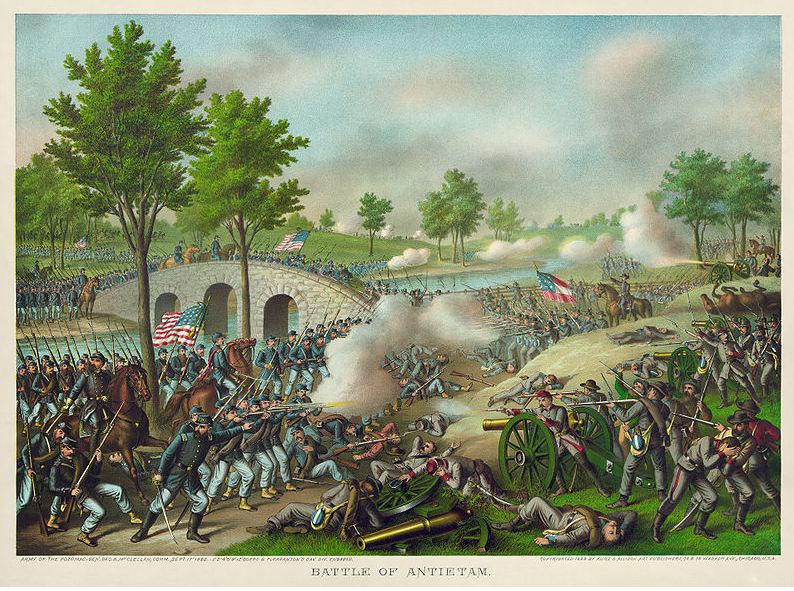
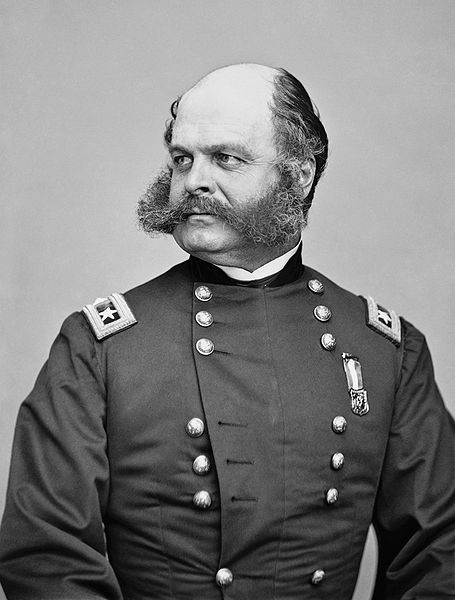
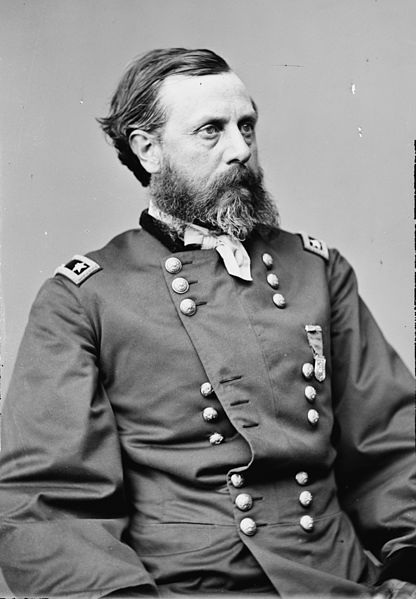
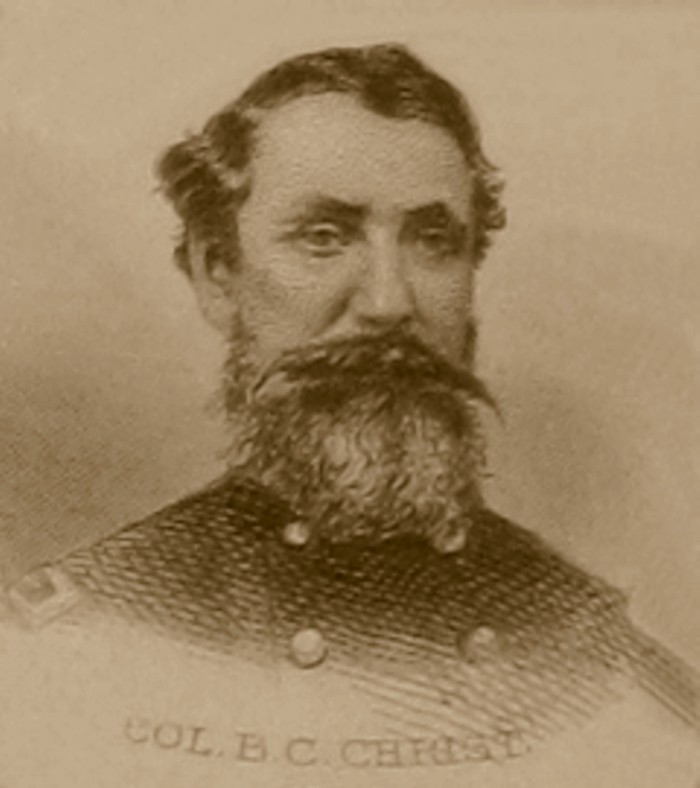
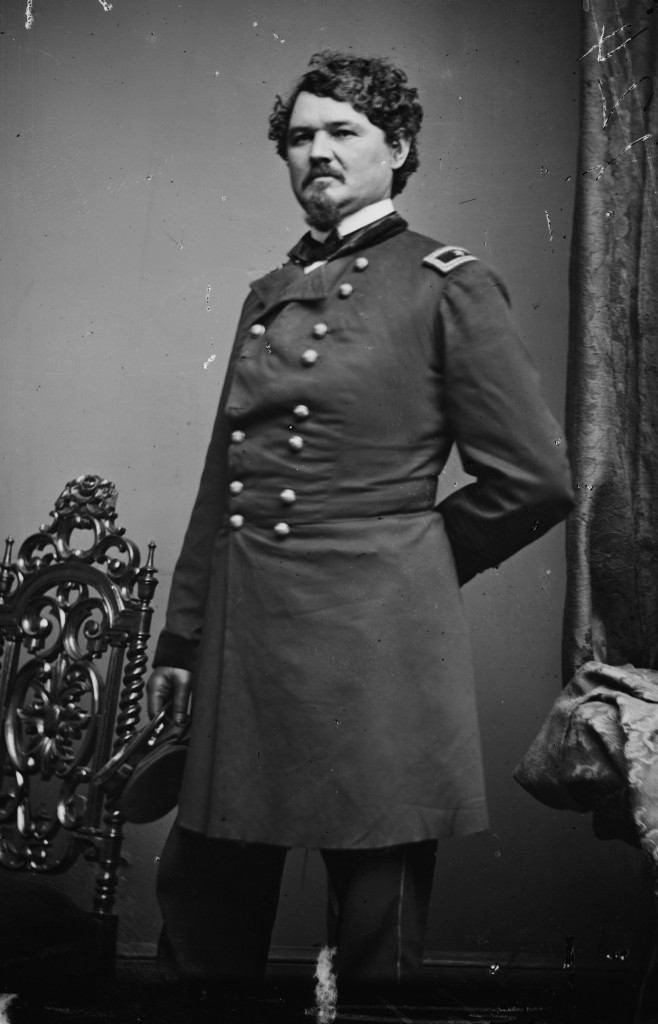
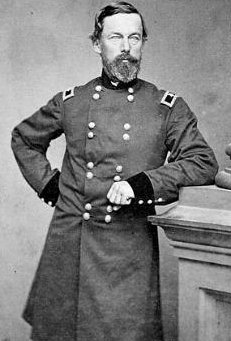
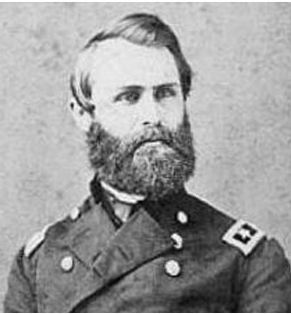
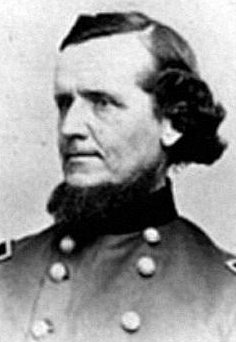


Comments